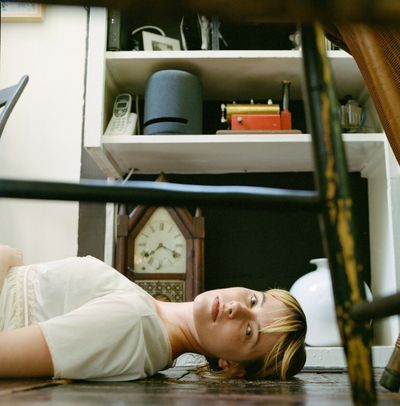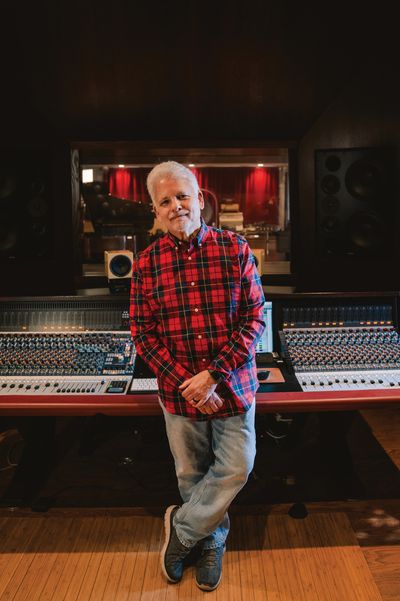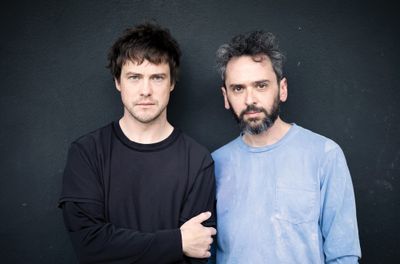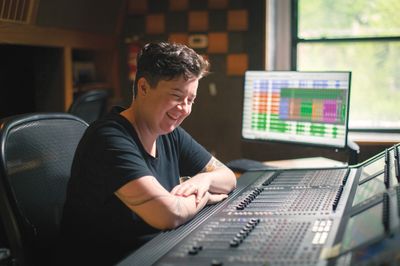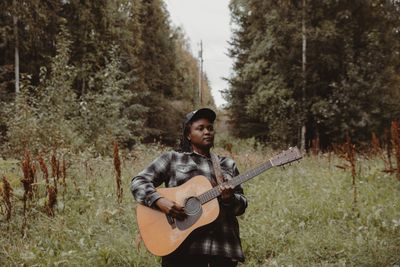How did you come to study electronics?
I saw the Rolling Stones in 1969 on November 24th in Detroit and that's when I knew I wanted to work in the music business. I had taken guitar lessons and I realized I wasn't a musician, but I really wanted to get into the recording or music business. I grew up in Canton, Ohio, and went to college for a year at Urbana University to try and stay out of the draft. After the first two quarters I was going to flunk out. I begged them to keep me in one more quarter and then I flunked out again. Too much partying; not enough studying. I was then almost drafted. This was 1969 -1970. Not knowing if I was going to get drafted or not, I hitchhiked to San Francisco. I was living in the Tenderloin district between Turk and Eddie Streets. Coming home from the grocery store one day, I noticed this one building. It was the only building that looked decent in the whole neighborhood. I knocked on the door to find out what was in there. It was Wally Heider Studios. said, "Give me a job." They said, "You either have to know somebody, or you have to know electronics." I went back to Ohio, and my mother paid for me to go to United Electronics Institute — a two-year technical school that turned out TV technicians. I graduated in January of '72; from there I moved to Florida, where I had friends.
How did you end up working on recording gear for MCI [Music Center Incorporated]?
Around 1973 I got a job at Motorola, in Fort Lauderdale, where they were building pagers at the time. I worked there about a year, but still wanted to get into recording somehow. A friend of mine, Steve Beverly, was working there as well. We found out that there was a recording class at Criteria Studios in Miami given by Karl Richardson, who was a big time guy. He'd later record Saturday Night Fever by the Bee Gees, Average White Band, Lynyrd Skynyrd, Eric Clapton... and the list goes on. So we went and the first thing out of Karl's mouth was, "We have all MCI equipment here, because they build it in Ft. Lauderdale." Steve and I look at each other like, "They build all that, and we're working at Motorola?" The receptionist took my job application, once a week, for eight months, before MCI hired me. I think she was throwing my
applications away.
You were working on consoles at MCI?
After working there for about a year, MCI brought out a new model, the JH 528, a larger console than the previous JH 428. It really had everything: more EQ, more sends and 32-track assignments. MCI started selling a lot of the larger consoles. I had been relegated to checking out the smaller 428s; they had brought in another guy in to do the 528s. But Wally [Watkivs] told me that if I didn't have anything to do, I could check out the 528s too. Eventually I only worked on 528s. The first three prototypes went to Criteria (serial #1) and Atlantic Studios (serial #2 and #3) with the promise of an automation package and light meters to be added as they were designed. They had started selling a great many of them and the engineering staff had been going out to install them. They didn't want to do that anymore, so they decided to see if I was up to to doing the installations. I went to Nashville on my first service call, with a design engineer named Larry Lamoray. After that trip Larry didn't go on the road anymore, I did.
Why did you move from MCI to Atlantic Studios?
I continued travelling to studios around the world for MCI. Then, in the early '80s, Sony bought MCI. Within a month or so I could see that I didn't like what was happening. During my many trips to Atlantic I had made friends with Sami Uckan who was the chief engineer at Atlantic Studios. Sami had told me, "Anytime you want to get a job up here, just call me."
How is it that you founded Coleman Audio?
While working at Atlantic Studios I started Coleman Audio as a freelance service company for recording studio repairs. So while I was working at Atlantic and Martin Audio, I had my own service company going too. There was a lot to do in Manhattan back in the days when tape was the format. My first client was Nola Recording Studio on 57th Street, in the Steinway Building. Every sound you heard on Sesame Street back then came through Nola. They had an MCI, which I had built while working in Florida, and that's why they hooked up with me. I can remember when Tom Spahn, who rented Studio B from Nola, was doing the first Tickle Me Elmo toy. Two to three weeks of comparing Elmo laughs for 10 hours a day. This is why I'm not a recording engineer! Martin Audio was bought by a holding company in New Jersey, and they started downsizing. It got so small that I was the only one left, and I was on the end of a pager-if they needed me, they would beep me. I was still doing a lot of freelance service work. The sales staff that had left Martin opened a parts department at Sam Ash. Jim Gillespie was the manager. He came to me and said, "Look, we know you have built things here and there." While at Atlantic I would build a meter panel or a switcher, as needed. Gillespie said, "If you could build a pair of stereo VU meters, Sam Ash will sell them." So I did, and that was the first Coleman Audio product. It started with the VU meters, then a cable tester, and then a switcher for "tape one/tape two." Back then they were still using tape decks and small mixers only had one "tape 1" input on the board, so you could take the output of my MS6 and you would have six inputs. After that, I built a speaker switcher. Tracey Dell from NBC called one day and said they needed to A/B between speakers with a really accurate, balanced level control. I built a custom module for them but I thought, "That's not enough in a box to sell as a product," so I added four stereo inputs, three stereo outputs as well as left and right mute switches. That was my M3 box. They were using it do post production editing for Saturday Night Live. NBC Burbank's network news department also wanted a custom box, which I built for them. Jim Pace, my dealer with Audio Intervisual Design, had been contacted by NBC's David Jackson for the device. Jim said, "Maybe I've got a guy who will build it." NBC News and Access Hollywood use this custom SS8 that I built for them — they've got it in Tel Aviv, Moscow, London, Washington DC and Miami. They have bought 42 of them. They usually buy six pieces a year. It's not a commercially marketable product, but it's exactly what they want. If someone comes to me asking for a custom box, I'll build it. If it looks like it's something that could be marketable, I'll turn it into a product. Like the first M3 box I built for NBC.
What are your thoughts on the current state of the art?
The computer audio workstation has really changed the whole recording industry. But you don't have the analog sound that people still want. That's why there is still a market for vintage gear, like Pultec EQs, Neve mic preamps and tube compressors, not to mention old microphones. I'm kind of a retro company. I try to keep things passive, which is as old school as it gets, from a technical point of view. I also try to accommodate that aesthetic for the user of the very latest digital audio innovations.
What are you focusing on now?
Right now I'm redesigning a section of the M3PH MKII, because a guy at AES walked up to me and said, "You ought to have the left minus right when you hit the mono button, instead of just the phase reverse on the output." This is how it happens all the time, and that's why it's important for me to be at places like the AES conference and the NAMM Show, to speak directly with the end users and learn their needs. Tell me what you need, and I'll build it. I always answer the phone and I'll help anybody that calls me, even if it's not about my product. The person may have my product but the real problem is with other equipment in his studio. I will do my best to help them figure it out. r
Read more of Holly's talk with Glenn at tapeop.com Photo by Kevin Downs
www.colemanaudio.com
Holly Lane is a music industry veteran who has run recording labels and studios. www.hollylane.org
